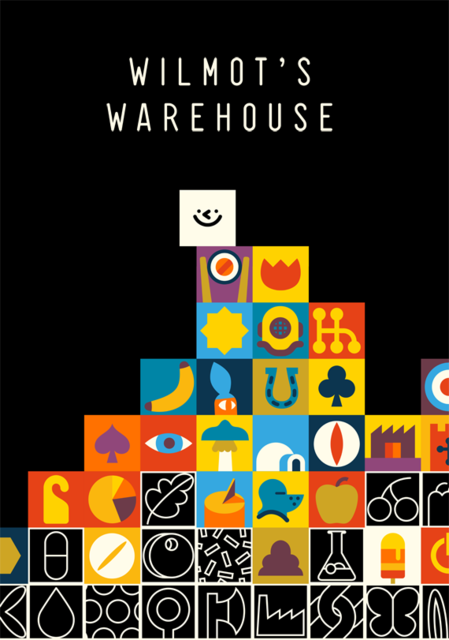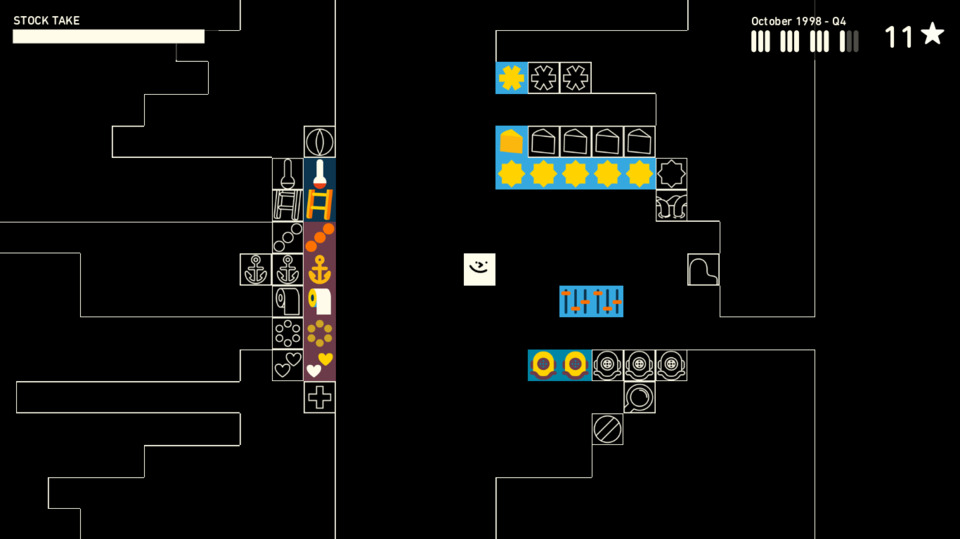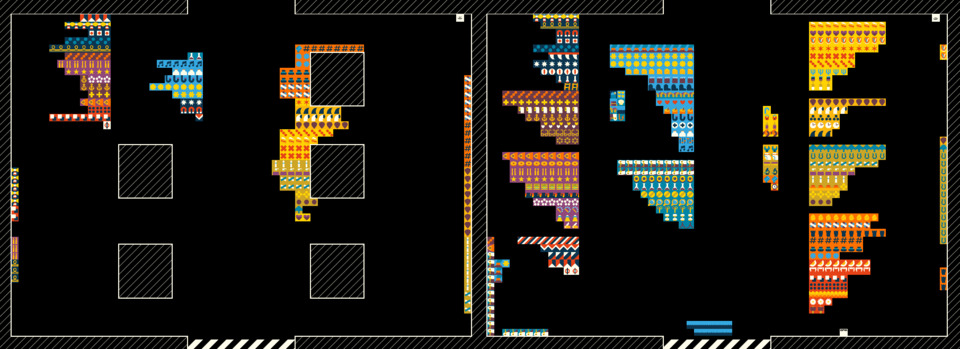
A stressful Indie puzzle game during a stressful election week may not seem like the brightest of ideas, but Wilmot's Warehouse - the organizational puzzle game from Hollow Ponds, the creators of Loot Rascals, and Richard Hogg (who was not created by Hollow Ponds just to be clear) - has proven to be the right kind of stressful; that is to say, that once I'm in that game I am fully focused on it and not, for instance, any results that might be slowly rolling in from Georgia or Pennsylvania like the world's slowest Katamari.
Wilmot's Warehouse is a deceptively simple game on first blush. I'm not talking aesthetically, since there's no deception there: the game has a minimalist style where the protagonist is just a box with a face and every piece of inventory is a similarly sized box with a crude or abstract graphic to distinguish them, which is the perfect kind of uncomplicated, denotative shorthand you'd need for a game like this. More that the rules of the game start plain but continue to adapt as you keep acquiring new types of stock. As the resident warehouse pusher (not a whole lot of other similarities to Sokoban beyond the thematic, fortunately) it is the player's job to organize the titular warehouse and deliver requested stock items to the staff at the reception window as quickly as possible. When you have a few dozen item types stashed away in your warehouse space, it's easy enough to keep track of where they all are and have them close at hand. When you pass a hundred types however, which might at any given moment have between one and twenty instances apiece, the logistics of keeping everything close and efficiently stored becomes much more of a pipe dream.
The brilliance of Wilmot's Warehouse is that whatever organizational style you choose, and whatever criteria you use to keep the stock items categorized, must continue to evolve as you "unlock" new merchandize. For instance, I've been keeping rows of inventory organized by color; if someone at the window asks for an item with a light purple background, for instance, I'm aware that I keep those items on the due western section of the warehouse (if imagining the entire space as a compass). However, I've gotten to the point where these rows have extended almost to the most southern end of the warehouse, which means travelling that much further to deliver orders. Likewise, some colors are more common than others - I have way more light blues than any other hue, for instance, which makes their demarcated zone of the warehouse far more cluttered - and some inventory types don't easily conform to a uniform color. Some, like a box with red, white, and navy blue stripes, don't really fit in with any of the color schemes - since there are very few white background types, I've been keeping them there just as a default.

The game's loop is split in such a way that there are frequent pauses to catch your breath. It plays in sets of three shifts: each shift starts with you ferrying the requested items to the counter, and you have ninety seconds to do so. After that, you have three minutes to take the freshly delivered shipments and sort them into your extant inventory in its current organizational format, moving blocks around in groups without unsettling any of the rows or columns of your pre-sorted stock. Whether you're ready or not, the staff show up to ask for more items, and this loop continues a total of three times until you get a "stock take": an infinite period of time to sort the warehouse before you press on with the next set of shifts. Between each shift you also have the opportunity to spend upgrade stars: these are earned from providing the more time-sensitive stock items first, and then a few more based on how quickly you can provide everything requested. Early upgrades are incredibly useful: the ability to carry more boxes at once; the ability to rotate what you're carrying to maneuver large groups easier; more space in the warehouse to work with; or a speed burst to get you around faster. Later ones then become handy but with caveats: a map that shows you the entire warehouse is only available in the top right of the area, which means you need a clear path to it and can't really rely on it when you're in the thick of things; a robot named Borky that can be assigned to move new deliveries to where identical instances are being stored, but if you're keeping things in neat rows it may not necessarily put items on the end but rather to the sides; or a pager that tells you what the staff at the window want before you move up there to see for yourself, but it won't tell you what the high-priority requests are and it's important you fulfill those first. The last few upgrades are useless: a timelapse of your playthrough thus far and an extremely expensive pair of dungarees that I'm not convinced will do anything besides change the look of my sprite. It's a system that offers vital boons early on, when you're still a little unconfident about your organizational chops, but isn't something you can rely on late in the game when the pressure is at its highest. Of course, by then, you won't really need the stars as badly as before.

I can't help but wonder if it was genius foreplanning or a touch of serendipity (good game design is usually a mix of both, given the amount of tweaking involved) that makes Wilmot's Warehouse that little bit more intense after every shift, as you're eventually forced to toss out old ways of thinking as untenable and scramble for a scheme that will suit the new reality. Even while you're in the midst of its timed three-shift gameplay loop, it's never incredibly demanding; it's only afterwards in the calm of the storm, when you have time to ruminate and double-guess yourself, that the game is at its most insidious. After all, it'll be during this stock taking time that you'll consider spending an hour moving boxes around for a new and improved "system" that the game will have its hooks in you deepest. Whether you decide to organize by color or by theme ("nautical" seems busy, as does "animals"; though where does that put sharks?) or decide on long rows of identical items or opt for generally squareish "zones", or decide whether to keep the warehouse's central north/south thoroughfare free to make it easier to move with large amounts of inventory or start filling it up because you're running out of space close to the window counter: these are all dilemmas you end up making early choices about and then later changing those choices on the regular. I figured I'd like this game because I have a real lizard brain when it comes to organizing and filing, but if anything I underestimated how well the game knows what it means to have that sort of mind and how best to screw with those that have it. Maybe "begrudingly respect" is a better way to describe how I feel about the game than "love", but either way I can't seem to put it down. Could be I just don't have a space cleared out for it yet.
Rating: 5 out of 5. (I guess.)
| < Back to 194: Milkmaid of the Milky Way | The First 100 | > Forward to 196: OneShot |
Log in to comment